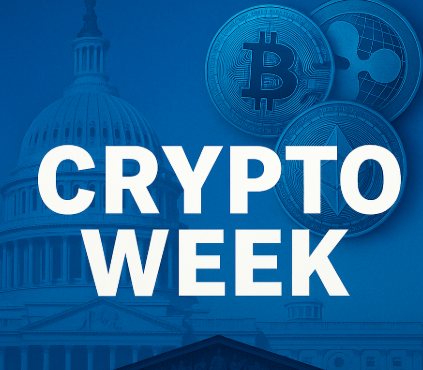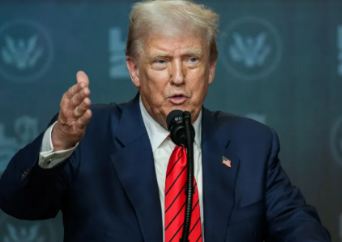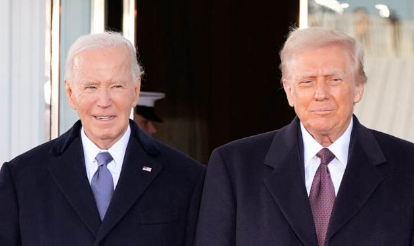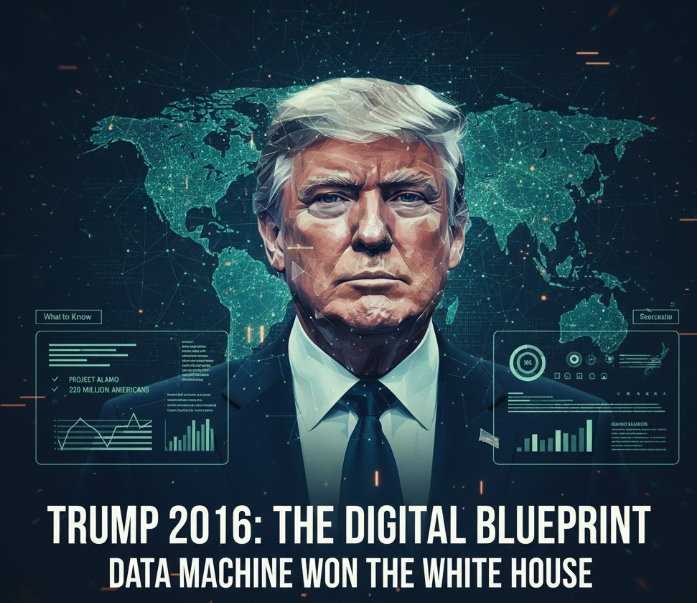Donald Trump is making Bitcoin central to his campaign, using it to appeal to younger voters, libertarian independents, and digital asset advocates frustrated with government oversight.
What to Know:
- Trump publicly embraced Bitcoin at a 2025 Mar-a-Lago roundtable, positioning it as a core part of his campaign’s identity and legislative agenda.
- His platform supports national crypto regulations, reduced SEC oversight, and self-custody rights—policies aimed at digital asset holders and free-market voters.
- Gen Z and libertarian independents are key targets; nearly 30% of young adults have engaged with crypto, and many feel politically alienated.
- Democrats like Sen. Elizabeth Warren are taking the opposite stance, pushing for strict regulation that frames crypto as a threat to consumers and stability.
- Crypto could emerge as a defining wedge issue in 2026, especially in swing states, where turnout among young or skeptical voters could tip House races.
In a smoky Mar-a-Lago ballroom filled with crypto whales and digital evangelists, Donald Trump declared what many suspected: he’s going all in on Bitcoin. At the June 2025 Bitcoin Roundtable hosted in Palm Beach, Trump positioned himself as its political champion, promising clear frameworks, friendly regulation, and federal protection against what he called “the Biden-Warren crackdown on financial freedom.”
President Donald Trump speaks about GENIUS; still taken from YouTube
Make no mistake: this wasn’t just economic posturing. It was a deliberate move to rally Gen Z libertarians, disillusioned independents, and digital-native voters around a new identity issue. Trump's embrace of cryptocurrency signifies more than just a technological shift; it's a strategic move to create a cultural divide. This initiative aims to unite proponents of free markets, anti-establishment sentiment, and skepticism toward large government institutions.
|
All Crypto Bills Passed by the U.S. House in July 2025 During what was dubbed “Crypto Week,” Congress approved three landmark bills with major implications for digital assets: 1. GENIUS Act (Guiding and Establishing National Innovation for U.S. Stablecoins Act)
2. Digital Asset Market Clarity Act (also known as the "Clarity Act")
3. Anti‑CBDC Surveillance State Act
|
Bitcoin, but Make It MAGA
Crypto hasn’t always had a home in the Republican Party. Until recently, it was more associated with Silicon Valley libertarians and global fintech than red-hat populism. But post-FTX, as Democrats like Sen. Elizabeth Warren doubled down on strict oversight and consumer protections, Trump spotted an opening: he could become the “Crypto Kingmaker,” wrapping Bitcoin in a populist cloak of freedom, sovereignty, and disruption.
“Under my administration, we will work to ensure crypto can thrive in America—not be chased offshore by overzealous regulators,” Trump said at Mar-a-Lago, drawing applause from a crowd that included major digital asset executives and venture capital backers.
It wasn’t just talk. Trump has backed legislation in 2025 that would:
- Create a national regulatory framework for digital assets (rather than state-by-state chaos),
- Classify most cryptocurrencies as commodities, reducing SEC oversight,
- And protect self-custody rights, ensuring Americans can hold crypto in private wallets without mandatory third-party intermediaries.
Trump's stance is unequivocal: he's not just pro-crypto; he's actively constructing a platform that champions financial freedom as a fundamental civil liberty.
Gen Z: Disillusioned, Digitally Fluent, and Up for Grabs
Among all age groups, young adults under 30 remain the most engaged with cryptocurrency, according to a 2024 Pew Research Center survey. Roughly 32% of adults under 30 reported having ever used or invested in cryptocurrency, compared to only 7% of adults aged 50 and older. This younger cohort is also the least likely to report confidence in traditional institutions, with turnout patterns showing weaker participation in midterm and off-year elections.
Screenshot taken from Pew Research Center
While interest in digital currencies remains relatively high among younger adults, skepticism persists. Pew found that 43% of adults under 30 say they are not confident in the safety and reliability of cryptocurrencies. That skepticism increases with age, reaching 68% among those over 50. Approximately 60% of Americans, across all age groups, have little confidence in the safety and reliability of cryptocurrency.
Data from Pew Research Center
These figures suggest a generational divide in both exposure to and perceptions of digital assets. While younger voters are more familiar with the technology and more likely to have interacted with it, they are not necessarily convinced of its long-term stability or trustworthiness. Politically, this positions crypto-related outreach at a crossroads, appealing to digital fluency while grappling with underlying uncertainty.
Libertarian Independents: The Quiet Crypto Bloc
While much of Trump’s attention has been on rallying the base, his crypto push also appeals to another vital group: libertarian-leaning independents, especially in Western states like Arizona, Nevada, and Montana. These voters, wary of centralized authority (e.g., firearms, currency, expression), see cryptocurrency as a symbol of sovereignty.
Trump's embrace of digital assets goes beyond a mere nod to innovation. He’s broadcasting values: decentralization, deregulation, and distrust of the bureaucratic elite.
Contrast this with Democrats like Sen. Warren, who has made crypto regulation her signature fight, calling the industry a “shadow financial system” and co-sponsoring bills to impose Know-Your-Customer (KYC) and Anti-Money Laundering (AML) mandates on every aspect of blockchain use. To pro-crypto voters, it feels like the war on digital privacy is coming from the left.
Crypto as a Wedge Issue in 2026 and Beyond
What abortion was in 2022 and crime was in 2024, crypto could become in 2026: a cultural fault line that signals which party you trust with your future. Republicans aligned with Trump’s vision are already seizing the moment. GOP congressional candidates in safe red districts are openly campaigning on Bitcoin protections. Even in some purple areas, like parts of Florida and Texas, the message is being tested in digital ad campaigns targeting young male voters.
Democrats face a dilemma: they must balance consumer protection with supporting innovation. That tension is being exploited by Trump’s allies, who frame the choice as freedom vs. federal overreach. At least in the online sphere, this strategy appears to be effective. Crypto influencers, YouTubers, and TikTok creators are rallying behind the Trump pivot, casting him as the only politician who “gets it.”
Wrap Up
Trump’s crypto push is part of a broader post-MAGA strategy to build a coalition that crosses lines of race, age, and class. It brings together truckers, TikTok creators, gold enthusiasts, and Bitcoin supporters under a shared distrust of institutions. If moderates determined the outcome in 2024, the 2026 midterms may hinge on turnout and the specific issues that move voters.
Crypto alone is unlikely to decide control of the House. But in a low-turnout election, a few thousand Gen Z voters motivated by Bitcoin culture or libertarian ideals could make a difference in key states like Nevada or Michigan. Trump is not just tapping into a trend. He is working to turn digital currency into political capital. In a polarized and uncertain environment, that strategy could succeed.





